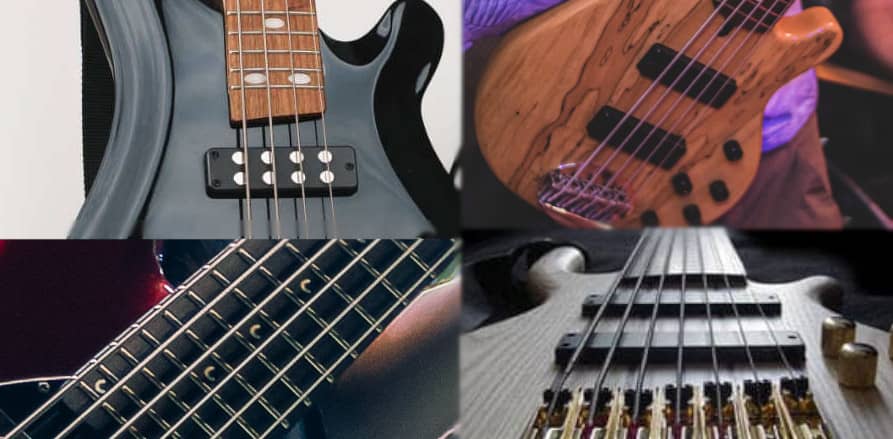Knowing how many strings a bass guitar has is the best way to separate it from a guitar. This is also helpful for understanding the role of the instrument, and why some bass players prefer having more strings. So, first things first, how many strings does a bass usually have?
Most bass guitars have four strings, and more than half of bass players prefer playing 4-string basses. Five-string bass guitars are also commonplace and 1 in 3 bassists prefer playing 5-string basses. Six-string basses exist, but are less common and only preferred by 9% of bass players.
In other words, bass guitars usually have 4 or 5 strings. Thus, if you are in doubt whether a 4 or 5-string instrument is a bass or a guitar, it`s in all likelihood a bass. 6-string basses can be distinguished from guitars by their broader fretboard, thicker strings, and larger size.
While that covers the basics, I am sure you have some questions left regarding how many strings bass guitars have. Namely, why do bassists opt for 4 strings over 5 or vice versa? Also, why do some opt for basses with 6 strings?
I`ve also polled more than 950 bass players about how many strings they prefer their basses to have. I did this in order for you to get an overview of exactly how popular basses with a certain amount of strings are.
How many strings do most bass players prefer?
Most bass guitars have 4 strings. This is also the number of strings that most bass players prefer. To be exact, 554 out of 958 bassists, or 57.8% of all bass players prefer playing a 4-string.
This is actually significantly less than I personally expected before I collected this data. This seems to speak to the rising popularity of the 5-string bass, which 297 out of 958 or 31% preferred playing:
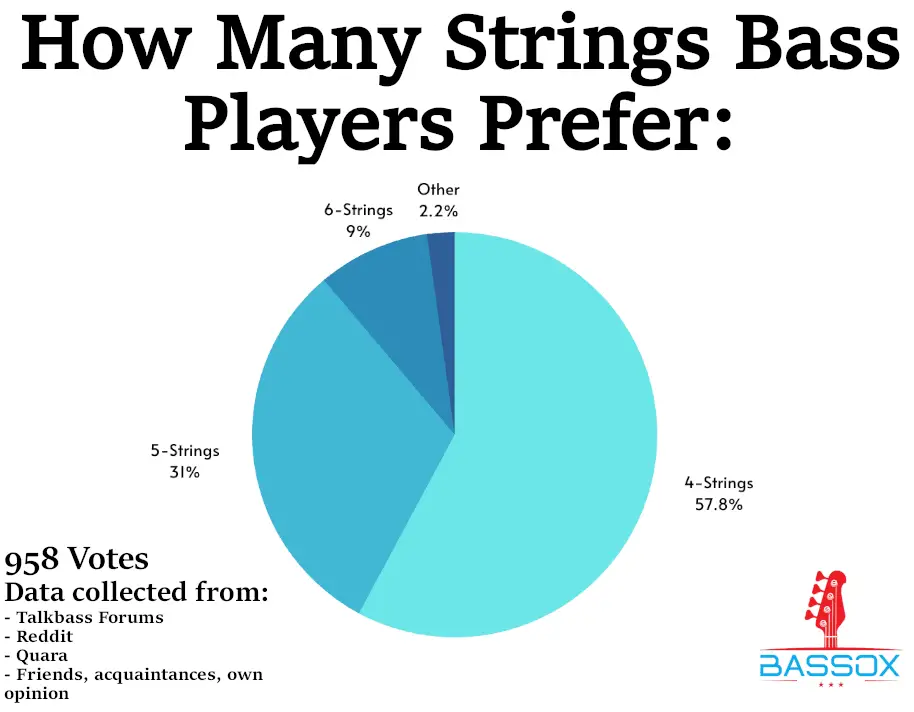
9% 6-string players, or 86 out 958 was also significantly higher than I expected.
A possible explanation for this is that I mainly polled bass players that actively participate in bass forums. As these are experienced players, they are more likely to pick up a 6-string than a beginner. Thus, if more complete beginners were included in the poll, this number might have been lower.
With that said, even with the current data bassist who prefer either 4 or 5 strings make up 88.8% of all bass players. As the market always will reflect demand, the vast majority of bass guitars made are 4 or 5 strings, with 4 strings being significantly more common.
Why do most bass guitars have 4- strings
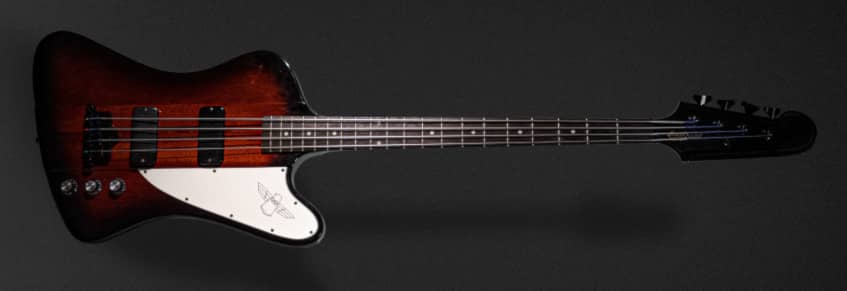
I have previously written an in-depth article on why most bass guitars have 4 strings. The short answer though is that most bass players simply don`t need any more than 4 strings. Some might even do just fine with 3, and a select few might only ever use 2.
However, having 4 strings hits a sweet spot where most bassists won`t feel limited by having too few strings. They will also rarely feel that all of their strings are redundant.
This is because most bass lines are played in a deep register. The frequency of the bass guitar is designed to fill a low range, and in turn, bassists often stick to playing the E and A strings in order to maintain a deep sound.
Related reading: If you`re unfamiliar with what this means, check out my guide on a bass string names.
They also regularly use the D string when playing deep lines of this kind. When playing octaves, adding melody, or playing bass fills, they will often use the D and the G string. As a result, all of these strings have their own unique purpose.
After playing the 4-string bass for 15 years now, I`ve very rarely felt that having an additional high string would have made this easier any easier. On occasion and additional string would have simplified certain bass lines, but never to the point where bass lines have become unplayable as a result.
Thus, I personally find 4-strings to not be too much, nor too little, and I know many bassist feel the same way.
Why do some bass guitars have 5 strings?
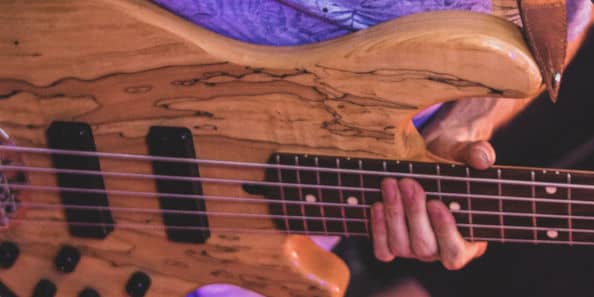
Compared to the 4-string bass, The 5-string has an additional deep string. As a result, they have the same range as 4-strings when it comes to playing high melodies and fills.
Instead, the low B string on 5-string basses lets the instrument reach even deeper frequencies. As a result, bassists can play grooves that sound heavier, deeper, and boomier on 5-strings.
There are also some bass lines that require a 5-string, or a down-tuned 4-string to be played. For example, one of the biggest songs of the 2010s, Uptown Funk, has a bass line with a low C. Thus, the easiest way to play this song is to play it on a 5 or 6-string bass.
Other examples of notable songs played on 5-strings include Bon Jovi`s Living On A Prayer, Paramore`s Misery Business, and Alice Cooper’s Poison. Thus, while learning the 5-string bass as a beginner is slightly harder than on a 4-string, the upside is that you get to learn lots of iconic songs.
It is also possible to play these songs on a 4-string if you tune the bass down. However, this will generally require a setup and a string change. Thus, it can be cumbersome and costly to set up your bass to play these songs on a 4-string, as opposed to a 5-string.
Ultimately, bassists tend to play 5-strings out of either convenience, preference, or both. They are a great fit for genres with deep riffs such as metal and rock, or if you simply want the option of having more deep range.
Why do some bass guitars have 6 strings?
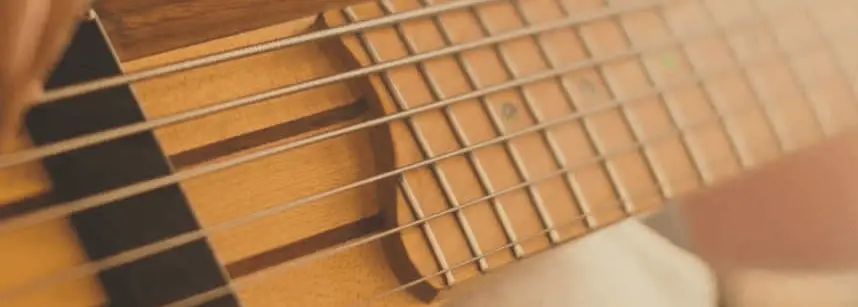
6-string basses have an additional low and an additional high string when compared to the 4-string bass. Compared to 5-string basses, the high C string on the 6-string makes it easier to play melodies and chords.
Thus, 6 strings give you a lot more options in how you can approach the instrument. This also makes it easier to play it more as a lead instrument, play multiple notes at once, and change up what register you play the instrument at.
However, moving away from the traditional role of a bass player makes the bass difficult to play. This holds especially true when playing in a band.
This requires you to have a good ear for whether you are adding enough low-end, and whether you are clashing with other instruments. You also need to be technically proficient enough to move between all 6 strings, on a relatively thick neck.
Therefore, whether a 6-string bass is worth it to you, largely depends on what type of bass player you are looking to be.
Those who pick up the 6-string generally want more options, and to push the boundaries of the bass. Thus, while it is possible to start out on a 6-string, it is in many ways an intermediate instrument that it is hard to make full use of before you have learned the basics of playing the bass guitar.
Other Types Of Bass Guitars

Lastly, some bass guitars have an unconventional amount of strings. These rarely see use in western music, but have seen their niche uses:
- 3-String: The Russian Balalaika bass has 3 strings and an E-A-D tuning. It has mainly seen use in Russian folk music since the 1700s. It has also seen some use by modern groups, such as the Norwegian Indie-rock band Katzenjammer.
- 7-String: Similar to 6-string basses, 7-strings offer either a bit more melodic or deep range to bass players. They offer a lot more range than most bass players will ever need but do have their uses in more technically demanding genres. Thus, you are most likely to see them used in progressive metal and technical death metal acts, with Danny Hauser of Veil Of Maya being a notable 7-string player.
- 12-Strings: The 12-string bass differs a bit from the abovementioned basses. This is because it has 4 sets of 3 strings that are played together. Thus, it is in a way similar to the 4-string bass but has a significantly more resonant and harmonic-heavy sound. A notable 12-string player is Jeff Ament of Peral Jam who has used 12-strings on multiple occasions.
- 69-Strings: While 7 and 12-strings have their niche uses, some bassists like to push the boundaries for how many strings there can be on bass, simply for the sake of pushing boundaries. Most notably, Youtuber Davie504 has played both 24 and 36-string basses. In 2022, he outdid himself and made a 69-string bass. It looks just as crazy as you might expect.
Conclusion
So while the bass guitar can have anything from 3 to 69 strings, the vast majority of them have 4 or 5. Some also prefer playing 6-string basses, and it is a more popular instrument among more experienced bass players. Altogether, 97.8% of all bassists prefer playing either a 4, 5, or 6-string bass.
In general, there exists both a 4 and 5-string model of the most popular forms of bass guitars. For example, you will find a 4 and 5-string version of the Fender Jazz, the Fender Precision. The Musicman Stingray and the Rickenbacker 4003S also have both 4 and 5-string models.
This is in large part because 1 out of 3 bass players prefers playing a 5-string instrument. As a result, 4 and 5-strings dominate the market and have defined how many strings most people think there are on a typical bass guitar.
In conclusion, there is no correct amount of strings to put on a bass. If you are a beginner who is looking to learn the instrument though, starting with either a 4 or 5-string is generally a good idea.
4-Strings are preferable if you have small hands or a still growing. 5-strings are great if you want more melodic options or are looking to play heavier genres of music. You can also start with a 6-string for more options, though this will be a more demanding and cumbersome instrument when starting out.

